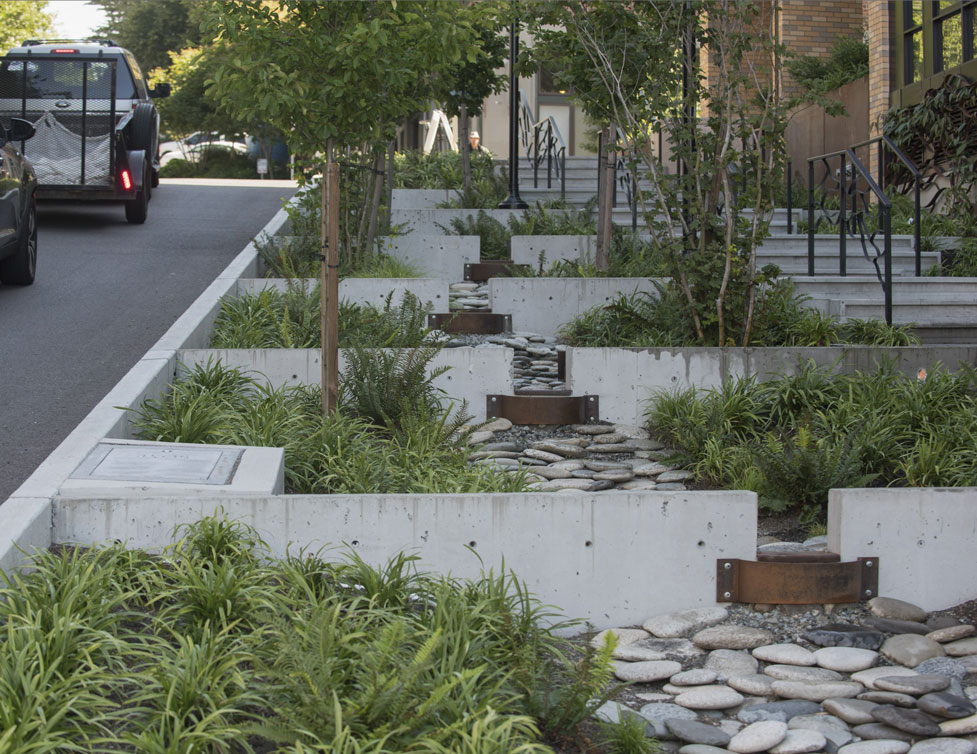Creating Nature-Based Solutions at Scale
Scope of Work Template: Site Screening and Selection Guide for High-Impact Stormwater Treatment

The Nature Conservancy (TNC) in Washington State has developed a Scope of Work (SOW) template and associated case studies to help organizations and communities identify, prioritize, and site high-impact stormwater treatment facilities that benefit people and nature.
The template serves as a customizable baseline for users to personalize with their community’s values and priorities, while the case studies serve as examples of the application of the template.
Jurisdictions and municipalities may have trouble making progress on stormwater projects due to competing priorities, limited resources, and organizational requirements that may take precedence. The SOW Template aims to efficiently identify opportunities and set municipalities up to apply for grant funding for feasibility studies, design, and construction of stormwater infrastructure.
The template is available in two formats, a PDF with example deliverables and a fully modifiable plain text document intended to be customized by the user. The template is arranged into five main Tasks:
- Agreement on project goals and desired outcomes
- Select a target waterway or reach within project boundaries
- Gather detailed information about the preferred waterway or reach
- Identify potential sites for intervention
- Screen site and select a preferred project location
Steps begin at the regional or watershed scale and sequentially move toward the selection of one or more preferred site(s). At the conclusion of Task 5, users should have selected a site, be able to integrate with Capital Improvement Plans, and be well-prepared to begin an initial design or pursue supplemental funding through grants or larger initiatives.
Users of the template should feel empowered to adapt the portions of the template that are relevant to their work. It is recommended to include Task 1 in any project to ensure client objectives, values, and priorities are reflected through the work. However, depending on prior work in the watershed, current initiatives, or other priorities, the user may choose to skip portions of a task or whole tasks entirely. For example, Phase II jurisdictions may skip Task 2 and use areas identified in their Stormwater Management Action Plans for the focus of Task 3. The template can also be used for opportunistic planning. For example, if a city wants to evaluate stormwater opportunities for specific land use types it may make sense to begin at Task 4 and include only what is needed from the previous tasks.
Links (updated March 2024):
GSI SOW Template (PDF)
Customizable GSI SOW Template (WORD DOC)
GSI SOW Case Studies (PDF)

Photograph by Hannah Letinich
Photograph by Hannah Letinich
Subscribe to our e-mail list.
Stay up-to-date on how we are building a movement around nature in cities - including the latest stories from the blog and upcoming events.
© Kevin Arnold
